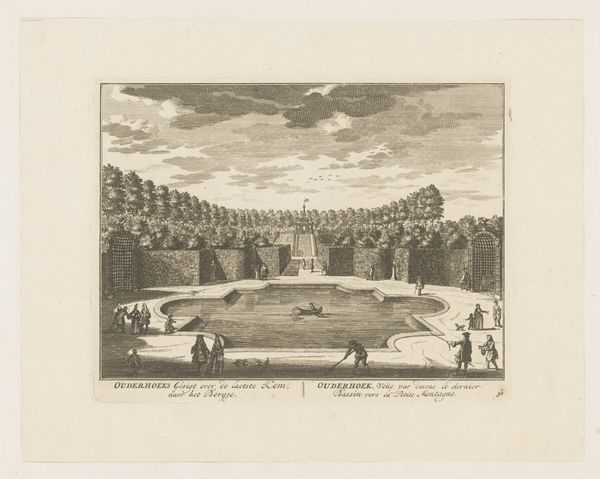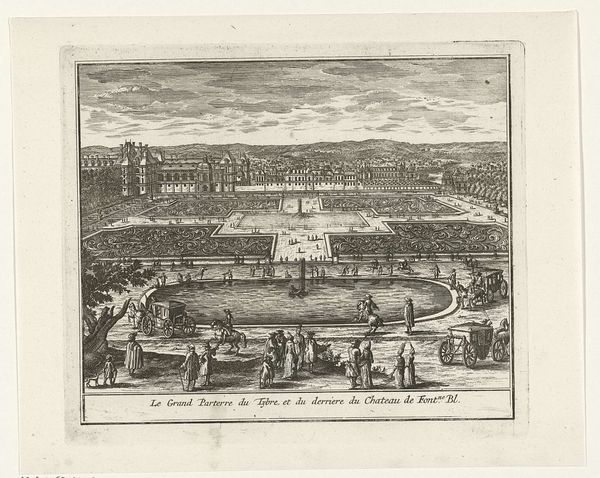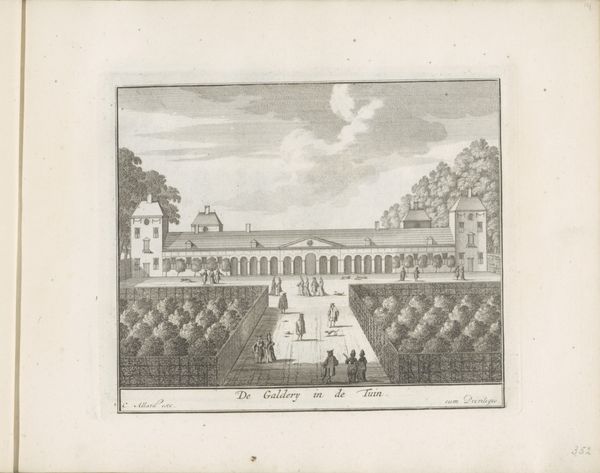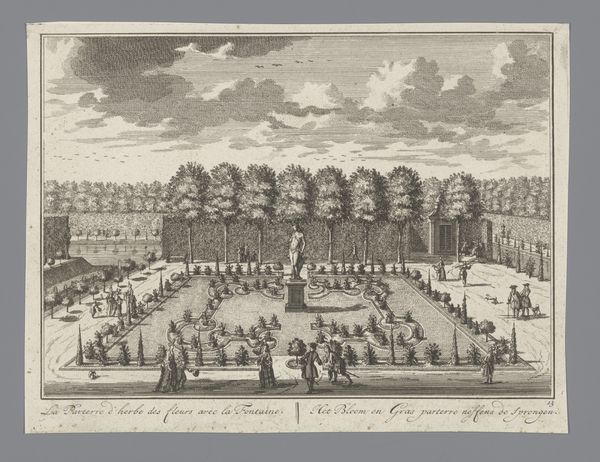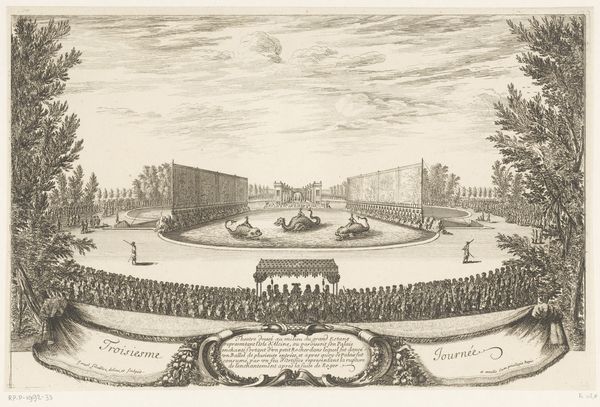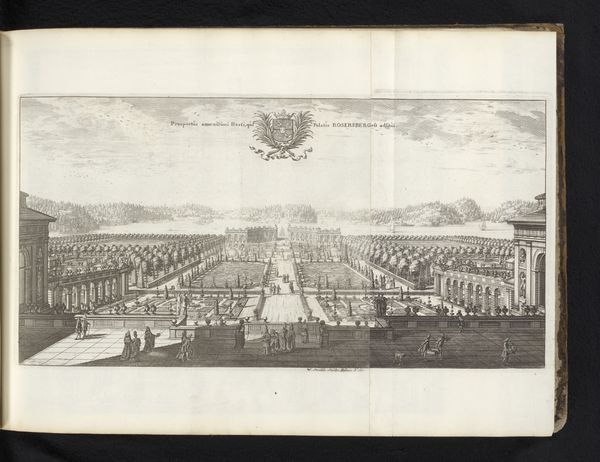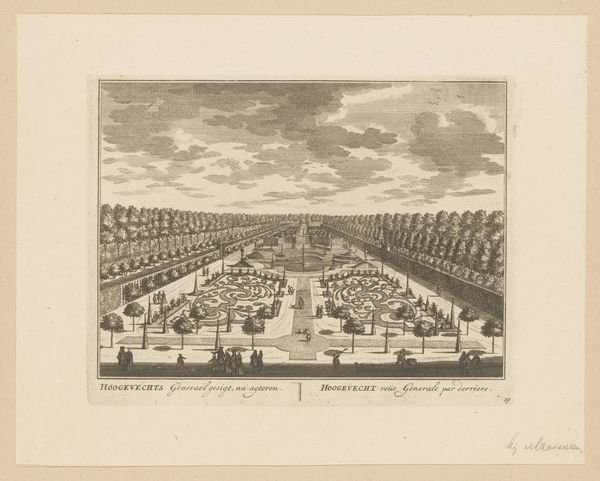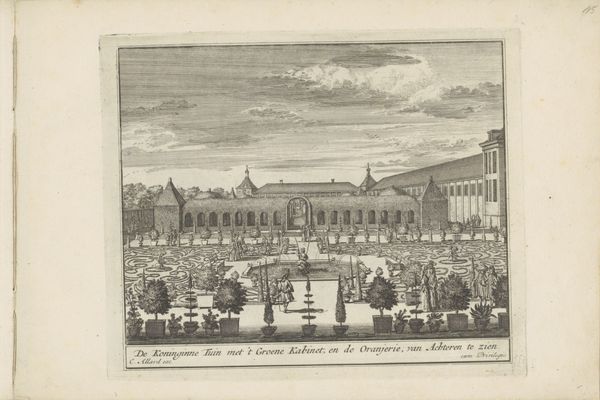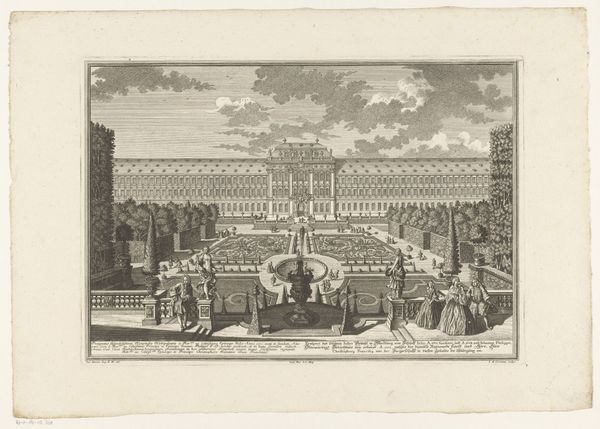
#
aged paper
#
childish illustration
#
photo restoration
#
old engraving style
#
retro 'vintage design
#
personal sketchbook
#
illustrative and welcoming imagery
#
ink colored
#
watercolour illustration
#
cartoon carciture
Dimensions: height 156 mm, width 201 mm
Copyright: Rijks Museum: Open Domain
Curator: Here we have Daniël Stopendaal's "Gezicht op de tuin van Ouderhoek," dating back to 1719. Editor: It feels instantly like a meticulously planned stage, doesn't it? The receding perspective and rigid symmetry—it’s almost unsettling in its perfection. Curator: Absolutely. Consider the composition itself. Stopendaal employs linear perspective to create a clear visual hierarchy, guiding the eye from the foreground figures towards the distant house. The rigorous organization into precise geometric beds speaks to Enlightenment ideals of order. Editor: Yes, but also consider the material context! This print wouldn’t exist without the labour of artisans, the availability of specific papers, inks, and, of course, the patronage system of the time. Who was commissioning this, and what did they intend to *do* with it? Was this image about power, status, or a vision of land ownership? Curator: All likely motivations, I think. Look closely at the way Stopendaal has rendered the trees, each leaf meticulously etched. The repetitive patterns and regimented nature reflect the prevailing aesthetic preferences for formal gardens in the 18th century, all of which can be read as social display and an attempt to command nature itself. Editor: Exactly! Think of the intense physical effort, too: the repetitive motions of the etcher, bent over the plate, recreating someone's vision of ordered nature. There's such a clear parallel between that work and the labor that built the physical gardens being pictured. Curator: Fascinating connection! What strikes me most, though, is the implicit contrast between the ordered garden and the untamed wilderness that inevitably exists beyond its boundaries. This engraving becomes a powerful statement about humanity's desire to control its environment through design. Editor: Well, when looking at it this way, it does evoke not only status but maybe a slightly oppressive mood that is rooted in very hard labor! Curator: A useful reminder to keep those broader social dimensions in mind as we contemplate Stopendaal’s vision. Editor: Indeed. Art so often serves to obscure those conditions even while indirectly being born of them.
Comments
No comments
Be the first to comment and join the conversation on the ultimate creative platform.

